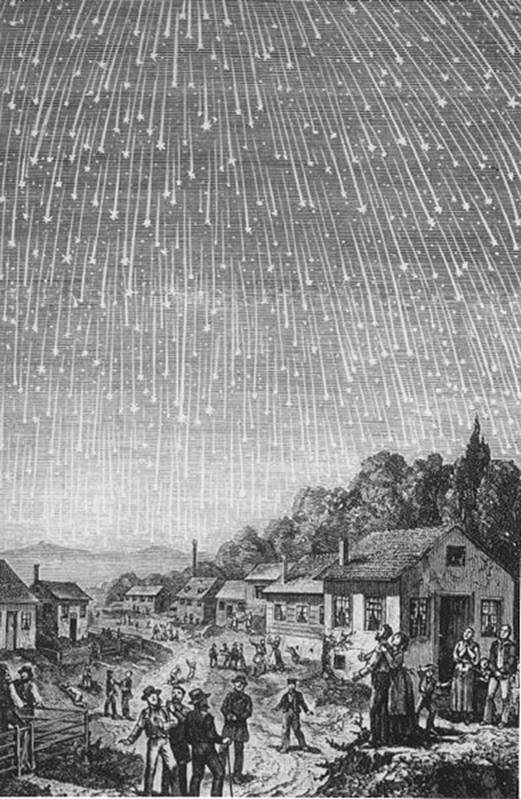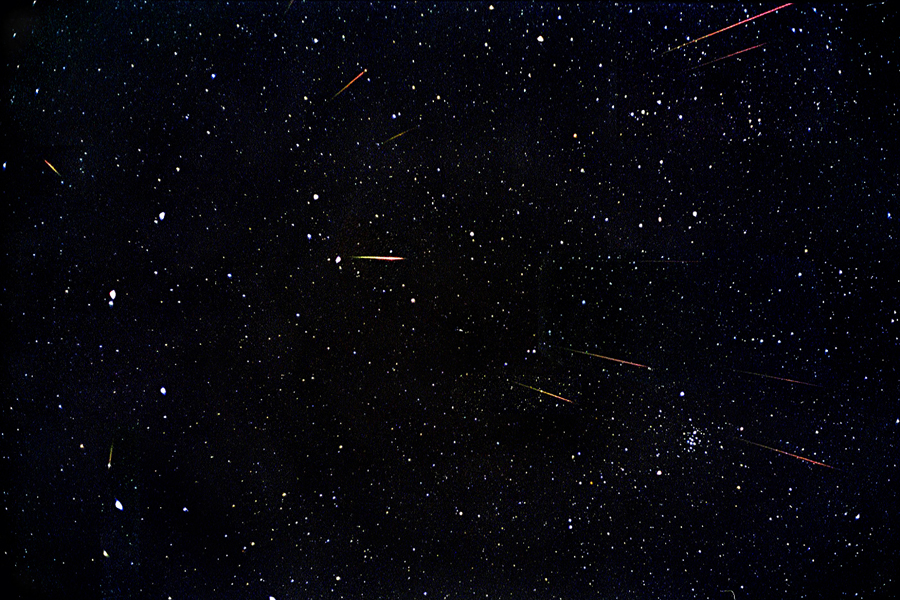 |
I spent most of the night watching
the display and taking pictures from my backyard in Connecticut, and I counted
617 meteors. The highest rates
occurred near dawn—I counted 100 meteors in the 23 minutes that began at
5:00 am. I continued to see meteors
as dawn arrived until the sky became too bright to see the stars.
I think it is fair to say that I waited a long time to see
a great Leonid shower. A good
display was predicted for November 1966, and I planned to watch from my home in
New Britain, Connecticut, but the entire week was cloudy. It was clear in the southwestern United
States, however, and many people saw an intense display for an hour or so, with
meteors estimated at rates of 10 per second! But the most intense Leonid storm may
have occurred in November 1833, when residents all along the eastern United
States saw meteors coming out of the sky like snowflakes in a blizzard, in a display
that continued all night. The
picture on the left is a famous engraving by Adolf Vollmy that depicts a scene from that night in 1833. That meteor storm was a complete
surprise, and unfortunately those who saw it could not enjoy it. No one knew what meteors were back then, and the sight of countless “stars” falling out of the sky understandably
caused widespread terror, with many people thinking it was the end of the
world.
Image details: A series of pictures, each a few minutes
in duration, were taken with a Canon camera and a 50-mm lens on Kodak Gold 1000
film. Those pictures that had
meteors visible were cut and pasted together using Photoshop to form this
composite image.
Picture credit: Engraving by Adolf Vollmyproduced in 1889 for the book Bible Readings for the
Home Circle, based on an account by a minister, Joseph Harvey Waggoner, who
witnessed the 1833 storm on his way from Florida to New Orleans.
|


